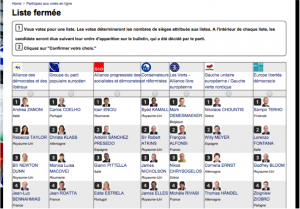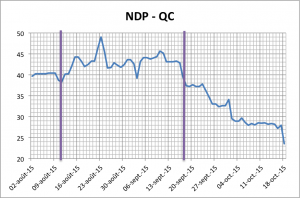By Katherine V.R. Sullivan, Université de Montréal
What’s the story?
Prince Edward Island is inviting Islanders to take part in an electoral reform plebiscite over a 10-day period between October 29th and November 7th. This extraordinary plebiscite will not only ask citizens to express their preferences about five different electoral systems, it will also allow them to express their preferences, either by traditional paper ballot, by telephone or electronically, using a government issued PIN. Furthermore, all citizens aged 16 or older will be eligible to vote.
The following question will be on the ballot:
“Rank the following electoral system options in your order of preference, 1 through 5 (with 1 being your most preferred and 5 being you least preferred)”.
The 5 options
First-past-the-post
This is the current electoral system, which involves single-member districts. This means that each voter casts a ballot for one candidate. The candidate having received the most votes in each district is elected.
First-past-the-post plus leaders
FPTP+ is similar to the status quo, but with the addition of a seat awarded to a leader whose party obtains a threshold of 10% of the provincial vote.
Preferential voting
This electoral system is used in Australia (lower house) and involves single-member districts. Voters are asked to rank the candidates according to preference. A candidate must then obtain an absolute majority of the votes in order to be elected. If no candidate has a majority, the candidate ranked last is eliminated and that candidate’s votes are redistributed to the other candidates on the basis of voters’ second preference votes. The process continues until a candidate has a majority of the votes and is elected.
Dual Member Proportional
DMP has two-member districts. Each party presents two candidates (primary and secondary) and voters elect a party. The first half of the seats goes to the primary candidate of the party with most votes in each district. After this is done, the number of seats each party “deserves” is computed, the total number corresponding to its share of the vote in the whole province. The number of remaining seats each party should get, which is the total number of seats it “deserves” according to the proportionality rule minus those won in the districts is then calculated. These remaining seats are allocated to the best performing candidates within each party. This should result in candidates from two different parties being elected in most (two member) districts.
Mixed Member Proportional
Finally, MMP is an electoral system used in Germany, New Zealand and Scotland, which gives voters two votes. The first vote is for a candidate in their single-member district and the second is for a party list within the entire province. The candidate with the most votes is elected in each district. After this is done, the number of seats each party “deserves” is computed, that total number corresponding to its share of the vote in the whole province. The number of remaining seats each party should get is then determined, which is the total number of seats it “deserves” according to the proportionality rule minus those won in the districts. These remaining seats are allocated to the candidates that are the top of the party lists. There are thus two types of elected candidates, those who represent specific districts and those who represent the whole province.
Why this matters
PEI’s plebiscite is important as it could lead to a change in the voting system in that province. Furthermore, this could affect the electoral reform debate that has been ongoing at the federal level. Finally, it may also spark a debate over voting age and online voting in Canada.
For more information on PEI’s voting-reform plebiscite, feel free to consult Elections Prince Edward Island’s website.





















